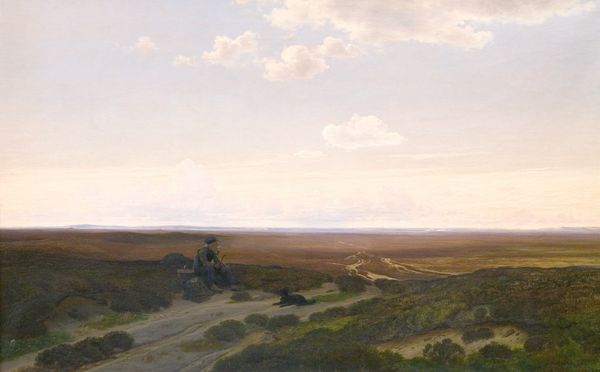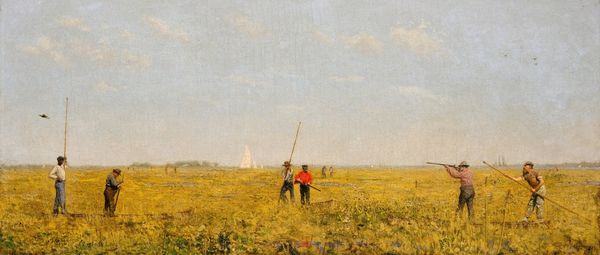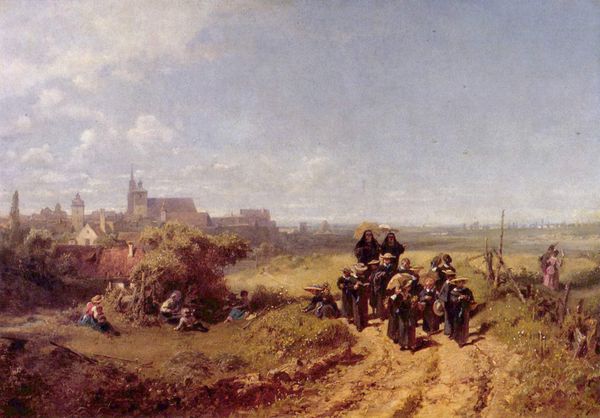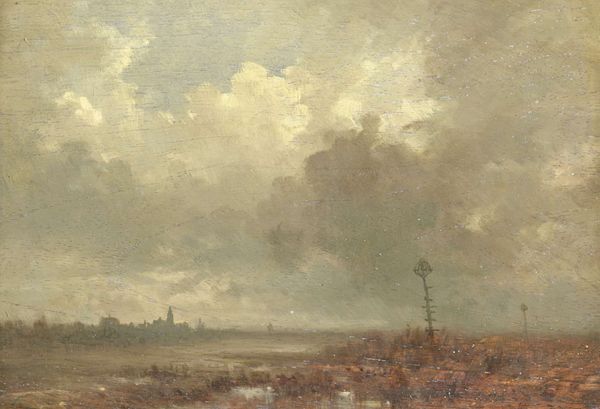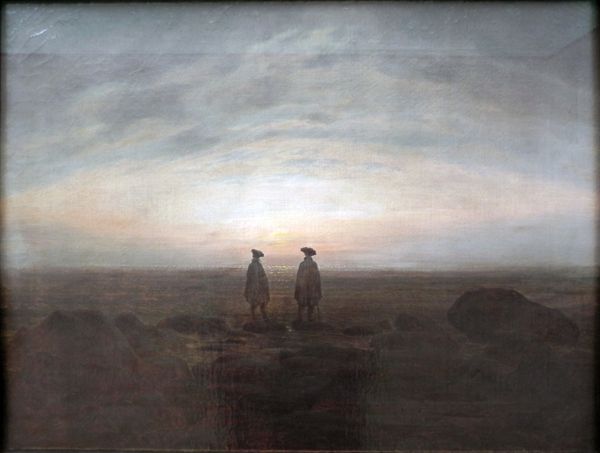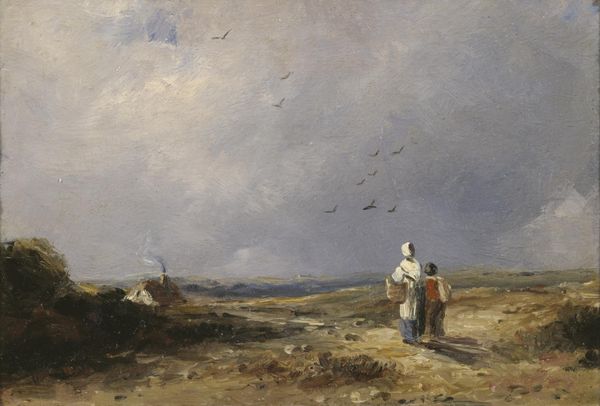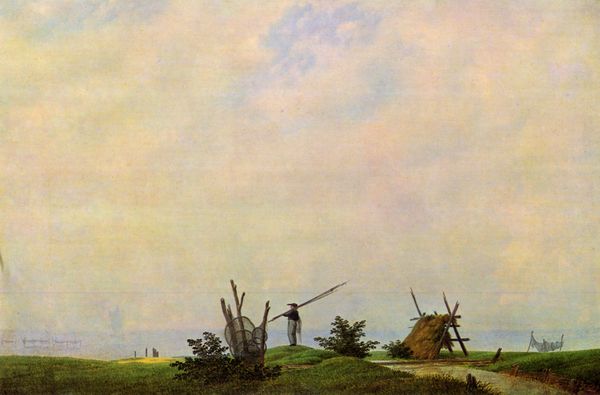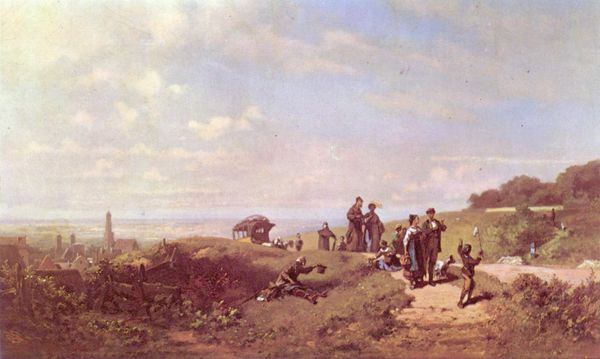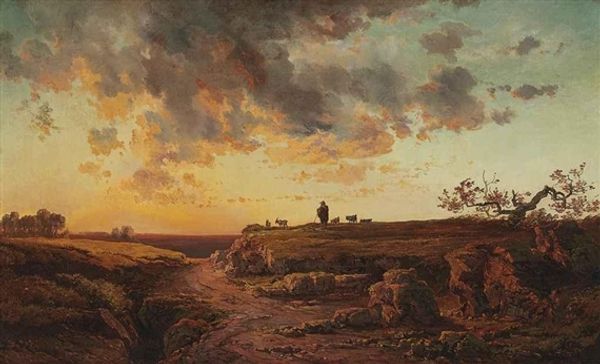
Copyright: Public domain
Editor: So, this is Ivan Aivazovsky's "During the Harvest in Ukraine," painted in 1883, using oil paint, maybe even en plein air given that breezy feel? I’m struck by the almost photographic stillness combined with that hazy, romantic sky. How do you read this painting? Curator: I see a narrative centered on the material realities of agricultural labor. Aivazovsky, celebrated for seascapes, here turns to the land, depicting the Ukrainian harvest. Look at the composition: the tired workers resting by a loaded cart, juxtaposed against the vast wheat field and distant windmill. How does the sheer scale of the field and that hard road affect your sense of the labor involved? Editor: It really drives home the immensity of the work, how endless it must have felt. Are you saying he’s commenting on the social conditions of the workers through this depiction? Curator: Precisely! The "Romanticism" of the sky contrasts sharply with the "Realism" in the foreground. It makes me question: is this an idealized or a realistic portrayal of the harvest? He gives us elements of both, no? And that windmill in the background hints at the mechanisms of grain processing, further emphasizing the transformation of raw material into consumable product. Do you think the materials he’s using -- oil paint -- speaks to any material conditions? Editor: The use of oil paint is interesting… it’s a readily available, somewhat accessible material. Perhaps the very use of a common material like oil mirrors the everyday scene it depicts. Curator: Exactly! And consider where it will likely hang. Not in a field! This art flattens, abstracts and then is itself traded on a totally different exchange! What do you think we learn from considering his seascapes versus his genre-paintings? Editor: It's fascinating to think about his engagement with both natural elements, like the sea, and the constructed environment of agricultural work. Thinking about materials and labour helps contextualize the painting. Curator: Indeed, this reframes it beyond mere aesthetic beauty. It urges us to consider art not as a product of individual genius alone, but of a complex interplay between material, labour, and social forces.
Comments
No comments
Be the first to comment and join the conversation on the ultimate creative platform.
